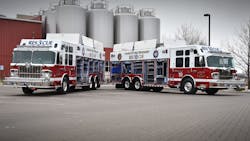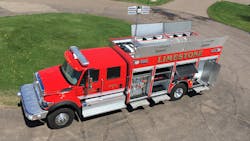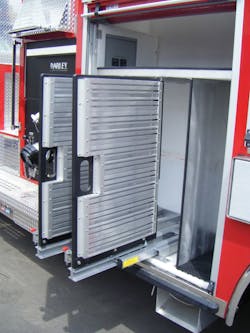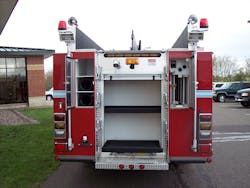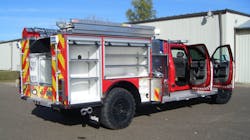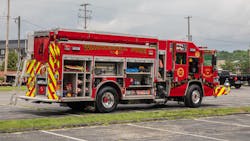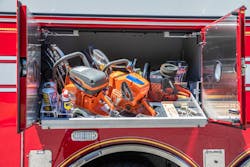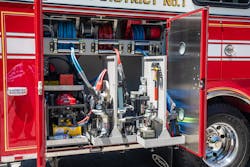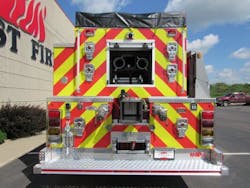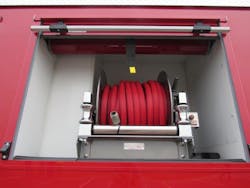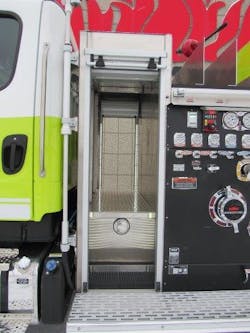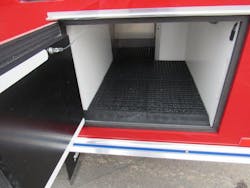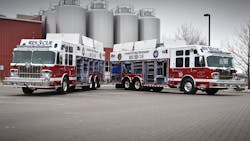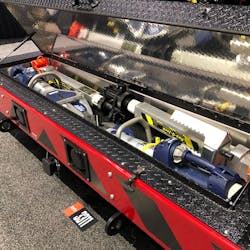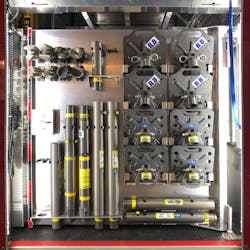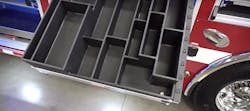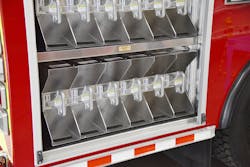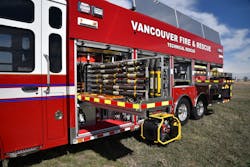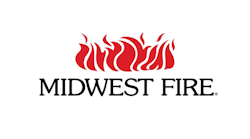A Place for Everything and Everything in Its Place
When it comes to storing and transporting equipment, responders need to prioritize and be thoughtful in fulfilling needs. Manufacturers can accommodate virtually everything, but planning and communication is required from the start.
Rescue trucks and fire apparatus are designed to carry lots of equipment to do a variety of jobs. Many have characterized apparatus as tool boxes on wheels, and as such, careful consideration is needed to make sure all the tools and equipment fit.
“We do like to know what’s being planned from the beginning,” said Peter Darley, executive vice president and chief operating officer of W.S. Darley & Co., an apparatus builder headquartered in Itasca, IL. “We need to know what will be carried for a weight aspect and so we can provide the right trays, brackets and mounts.”
Darley said the kind of apparatus will dictate the amount of equipment it will carry. “Just starting with the priorities will dictate the kind of apparatus,” he said. “Maybe water becomes more important than equipment, or if it’s a rescue, water might not come into play at all.”
As a general rule, Darley said the more equipment carried, the more planning should go into specifying apparatus.
Darley also said that standardization should be a consideration for departments so all rescue trucks, for example, are laid out the same and all engines are the same as well to make training and operations easier.
“If you’re happy with it, standardize it,” Darley said. “It will keep everyone safer.”
John Schultz, director of pumper products with Pierce Mfg., an apparatus builder in Appleton, WI, agrees that departments should plan ahead.
“Understanding the mission of each specific customer’s apparatus is extremely important,” Schultz said. “We typically try and understand the equipment and missions the department is planning and then work on right sizing and overall total compartmentation, and then work on it, compartment by compartment to tailor solutions to meet the individual needs.”
“In most cases, you can’t get enough storage space,” Jensen said. “That’s the consensus. … There are some onesies and twosies out there that they just want to haul water and they’re fine with just a minimal amount of compartment space.”
Other departments have very specific needs, and Jensen said manufacturers like Midwest Fire are usually able to fulfill those requests.
“If you’ve got a special piece of equipment, you need to talk to the manufacturer early to make sure it can be accommodated,” Jensen said, adding that Midwest Fire apparatus are “hand-crafted” and each one is built to meet the needs of the customer.
He said the company has custom-made bodies and tanks to accommodate hose reels by “notching out” part of the water tank to make room for it. He said Midwest Fire has also made special compartments in water tanks to accept SCBA packs and tucked hose reels between the tank and the back bumper.
Jensen said like most builders, Midwest Fire will do as the customer wants, as long as it meets industry standards and doesn’t compromise safety.
“We don’t ever give up on the safety aspect,” Jensen said.
And when it comes to safety, Bob Sorensen, vice president of sales for SVI Trucks, an apparatus builder in Fort Collins, CO, specializing in rescue trucks, said it is important to know the weight and placement of all tools.
"To achieve the proper weight and balance of a finished apparatus, your truck's compartment layout is extremely important," Sorensen said.
That information is typically conveyed to the manufacturer during the preconstruction meeting, Sorensen said.
“At SVI Trucks, the spec’ing process can take one to two days,” Sorensen said, adding that it’s not unusual for addressing equipment mounting and placement to take full day of discussions.
“For your pre-con meeting, you should bring a list of equipment that will be carried on the truck, including the size, weight and name of the equipment manufacturer,” Sorensen said. He added firefighters should also know where they want equipment mounted.
To help figure out weight and space ratios for equipment on apparatus, Sorensen recommends fire departments use the Fire Apparatus Manufacturers Association (FAMA) weight and cube calculator, which is available on SVI’s web site here.
Darley pointed out that a lot of decision making goes into developing efficient compartment designs for each department.
“There’s a lot of thought that goes into it,” Darley said. “…There are some tradeoffs that must be made, but you can never trade off safety.”
